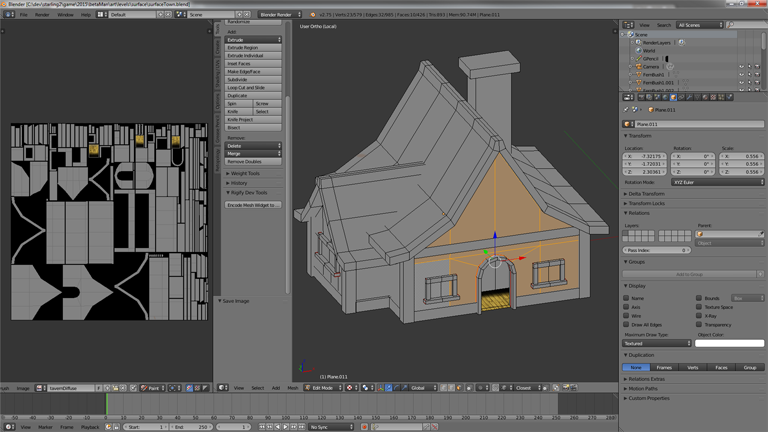You should only use as little as possible textures (regarding the number) per object for games. Explanation below.
Textures should always be in a power-of-two square size: 512x512, 1024x1024, 2048x2048...
You should always aim for a texture resolution as high as possible, downscaling can be done within the game engine via quality settings or as a batch process, e.g. with a free software like Irfanview. Upscaling is hardly possible. On the other hand, the higher the resolution, the more human resource goes into the creation process.
Textures should not only include a diffuse channel, but also normal & bump as well as Ambient Occlusion. (Depending on the game engine even light/shadow maps, reflexion maps etc.) Most game engines will utilize the unused Alpha channel of a texture, so your put your diffuse channel into RGB and the bump map into the Alpha channel, for a smaller number of textures.
E.g.:
Diffuse+Bump.png
|_RGB = Diffuse
|_Alpha = Bump
A texture of 2048x2048 for a whole house may work for a game, where the camera is far away, e.g. Anno type games. If you have a first or 3rd-person camera this resolution will be very blurry when getting closer to the house.
If it's not possible to cover a large object like a castle with one texture you can use multiple textures. However this shouldn't change your strategy to use as little textures as possible over using small, recyclable textures for multiple objects.
Use single, per-object textures for the following reasons:
- Project organization: Handling textures per object is much easier regarding changes, integration and management of your project
- Game engine integration: Depending on the game engine you may have to assing textures manually to each object
- Level design & workload: Handling many files is always slower than handling fewer, bigger files. Using multiple-object-textures over different game levels will nullify the advantage of less disc & memory space.
You can also create a free account on Turbosquid.com and look up their "Game Ready" specification, sadly this document seems not to be available ATM without login in:
http://support.turbosquid.com/entries/171903-Game-Ready-Certification-Specification
Here's an overview of texturing in Unreal Engine 4:
https://docs.unrealengine.com/latest/INT/Engine/Content/Types/Textures/index.html
As well as materials in Unreal Engine 4:
https://docs.unrealengine.com/latest/INT/Engine/Rendering/Materials/IntroductionToMaterials/index.html
Pay attention to the image under "Material Expression Nodes and Networks" to get an impression how UE4 handles UV's and textures.

